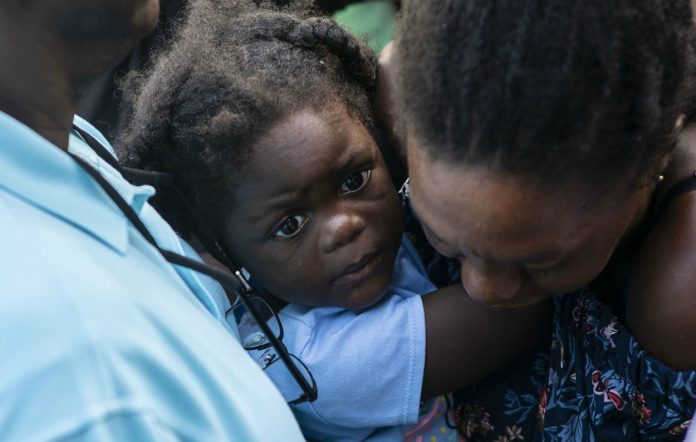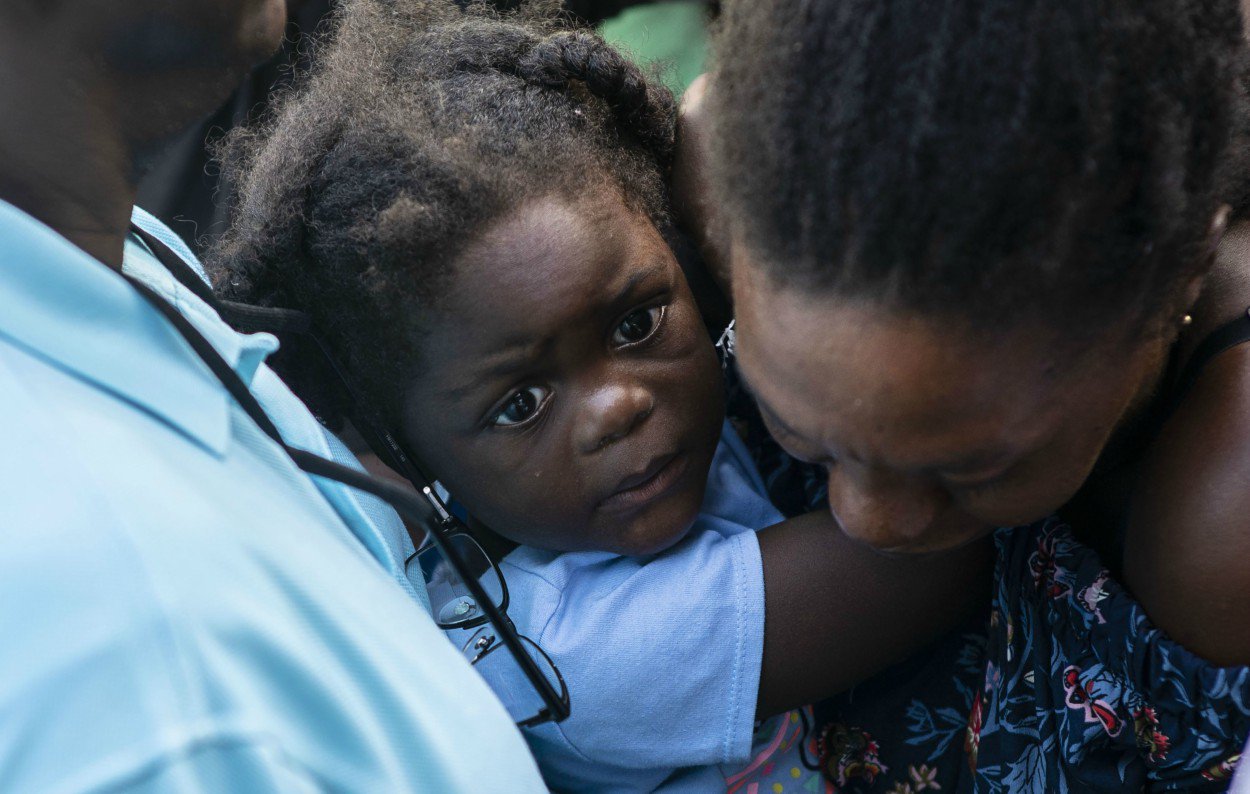[ad_1]

GRAND BAHAMA, Bahamas (AP) — Tanya Fox ignored evacuation warnings three years ago when Hurricane Matthew pummeled the Bahamas _ and survived in a nearby hotel. So when Dorian threatened, she again decided to ride out the monster storm.
She was convinced she would remain safe, she said. “Until I saw that it turned into a (Category) 5.”
Or “Category Hell,” as the United Nations chief later described it.
READ MORE: After surviving Hurricane Dorian, boy returns to school, gets touching welcome from classmates
Fox had never called anywhere but Grand Bahama home and she certainly didn’t want to abandon it, even as the storm raged north across the Atlantic. She stacked sandbags around her door and again, fled to a nearby hotel.
This time, she would not be so lucky.
Dorian mustered massive strength over warm waters and lashed the Bahamas for almost 40 hours. It struck the Abaco Islands on September 1, slowly churned west to hit Grand Bahama and then stalled for a day, compounding the misery. The winds howled and gusted at up to 220 miles an hour. The ocean roared ashore and swelled 20 feet high.
Whatever hope Fox had harbored turned to utter fear.
Dorian left a calamitous trail of destruction in the Bahamas; at ground zero lay the Abaco Islands and Grand Bahama.
The government has reported 56 deaths, though it’s widely believed the toll may be significantly higher. More than 600 people are still listed as missing, Prime Minister Hubert Minnis told the United Nations Friday.
READ MORE: Tyler Perry rescues people from the Bahamas and sends seaplane with supplies
Some risk modeling estimates put the Bahamas’ overall hurricane losses as high as $7 billion. More than 13,000 homes were destroyed.
Two weeks after Dorian, Lana Johnson, a nursing informatics specialist from Gainesville, Florida, carried palates of aid to her homeland. She also served as a guide for University of Florida journalism students who spent a week in the Bahamas reporting this and other stories for the Fresh Take Florida news service.
The Bahamas Johnson knew was gone. Her heart broke when she spotted her compatriots picking through the rubble, desperate to salvage their possessions.
“Everything around us had lost its color, its luster,” Johnson said. “It was gone. Everything was just brown and destroyed.”
The long-term impact of Hurricane Dorian remains uncertain. But the 70,000 or so people who called Abaco and Grand Bahama home, including Fox, know one thing: it will take a long time to get back to normal. Dorian took with it everything that is basic to life: hospitals, schools, roads, gas stations, grocery stores.
In Freeport, the main city on Grand Bahama, the lines at relief kitchens wrap around the street corner and shelves in the water aisles of supermarkets remain bare. Many residents are still without power and water and the lines are long for fuel and food.
Some public schools _ even in areas that weren’t badly flooded or escaped major wind damage remain closed – partly because of a lack of safe drinking water for young students. Other schools awaited the slow process of assessments by engineers that buildings wouldn’t collapse once classes filled with returning children.
Now, almost a month after Dorian, Bahamians are left to assess the loss and devise a plan to recovery. They are unsure how they will forge ahead when many are still reeling from Matthew in 2016.
READ MORE: Florida condo association tells displaced Hurricane Dorian survivors they are not welcome
American Red Cross spokeswoman Jenelle Eli said the timeline for the Bahamas’ recovery is unpredictable.
“Recovery from Hurricane Dorian won’t be just about clearing rubble and rebuilding _ it will be about addressing people’s needs and meeting them where they are, so they can determine their own recovery alongside the government,” said Eli, who was the first International Federation of Red Cross and Red Crescent team member to arrive in Abaco after the storm.
Fox is trying to do just that. She returned home once Dorian’s fury dissipated, even though she wasn’t prepared for what she saw to begin the long and arduous task of removing debris and cleaning her house.
“My home was just destroyed,” she said, wiping tears from her eyes.
Some Bahamians described Dorian’s destruction as “the devil’s work.” It was like nothing they had seen before.
The United States has pledged nearly $26 million in assistance so far. International organizations have executed a massive aid operation, but the sprawling island geography of the Bahamas and the extensive damage to infrastructure presented challenges in distribution of food and supplies.
Mercy Corps has pledged to deliver 3,000 emergency shelter kits to families. They also installed a tap stand at the YMCA that has the capacity to generate 7,500 gallons of drinkable water every day. Saline This is from Mercy Corps from the storm contaminated the more than 200 wells that Grand Bahamians depend on for water.
There are only two places on the island where residents can access clean water that’s not from a bottle, said Christy Delafield, director of communications for Mercy Corps.
“The estimates that we’ve heard about how long it’ll take for the water table to flush out the saltwater have really varied,” she said. “But for the foreseeable future you will be drinking saltwater.”
On Abaco, residents are still dependent on goods brought in by the military and aid groups. Traz Nixon said survivors are growing desperate. Some, he said, have been robbed at gunpoint over cases of water.
Throughout Freeport, mud lines on walls are 8-10 feet high, marking where flood waters once reached. Entire neighborhoods look like landfills, reduced to giant piles of belongings. Appliances, dinner plates, wedding photographs, clothes.
In Abaco, Dorian deposited cars and boats onto people’s yards. Shipping containers weighing 2 tons flew like missiles from the port miles away to land on lawns.
B.J. Swain returned for the first time to a house with no roof and half broken walls.
“There’s nothing left,” he said. “We managed to grab a few clothes that we can wash, but that’s about it.”
Swain, a draftsman by trade, knows the challenges that lie ahead in rebuilding so many homes and businesses. He plans not only to rebuild his own home, but he’s determined to help put his community back together.
___
This story was produced by Fresh Take Florida, a news service of the University of Florida College of Journalism and Communications.
[ad_2]
Source link

